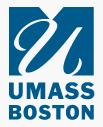Home > CIEE > Vol. 3 > Iss. 1 (2016)
Abstract
Massive open online courses (MOOCs) have attracted fame, perhaps even notoriety, in recent years. However, we have yet to articulate clearly the purpose and potential for MOOCs. Moreover, we lack established best practices in the process of designing MOOCs. We lack models for practical use by faculty and early career instructional designers, whose group members function with limited resources but would like to engage in the intriguing process of MOOC design. The first goal for this case study is to demonstrate how a MOOC titled Adventures in Learning Design, Technology, and Innovation (#LDTIMOLO) was developed following the ADDIE framework and theoretical perspectives of heutagogy and connectivism, and how that MOOC was evaluated with an emphasis on learner engagement. The second goal is to discuss the purpose and potential power of MOOCs and to reveal the surprising impact on graduate students that resulted from “wrapping a course around a MOOC” (Bruff, Fisher, McEwen, & Smith, 2013). The study explores questions regarding:
- How was ADDIE used in the design of #LDTIMOLO?
- What does engagement look like in #LDTIMOLO?
- What are the design lessons learned from evaluating #LDTIMOLO?
- What is the purpose of a MOOC?
- What are the reasons that participants took this MOOC (#LDTIMOLO)?
- What is the role of a MOOC instructor/facilitator?
- What is the impact of #LDTIMOLO on the participating graduate students?
- What is the best course of action for me moving forward with faculty-designed MOOCs?
Keywords
ADDIE, connectivism, heutagogy, learner engagement, MOOC, MOLO, online course design
Recommended Citation
Parra, Julia
(2016)
"Moving Beyond MOOC Mania: Lessons from a Faculty-Designed MOOC,"
Current Issues in Emerging eLearning: Vol. 3:
Iss.
1, Article 10.
Available at:
https://scholarworks.umb.edu/ciee/vol3/iss1/10
